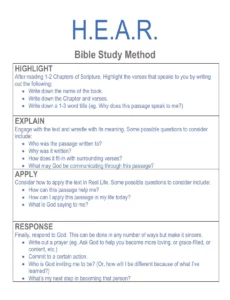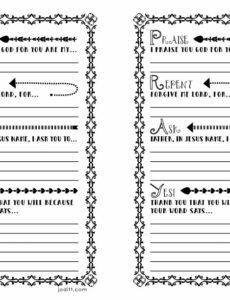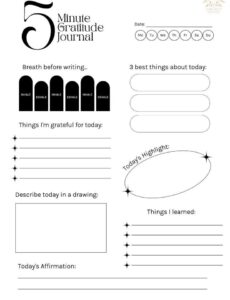Imagine your child’s eyes lighting up as they discover a tiny ladybug meticulously climbing a leaf, or the wonder in their voice as they describe the intricate patterns of a bird’s nest. Nature is a boundless classroom, offering endless lessons in curiosity, observation, and appreciation for the world around us. In our increasingly digital age, finding ways to connect children with the natural environment is more important than ever, fostering a sense of wonder that can last a lifetime.
One of the most effective and engaging ways to encourage this connection is through the simple, yet profound, act of nature journaling. It transforms passive observation into an active, creative learning experience. That’s where a well-designed field journal template for kids comes in handy, providing a gentle structure that empowers young explorers to document their discoveries, ask questions, and express their unique perspectives on the wild world.
Why a Nature Journal is More Than Just a Notebook
A field journal isn’t just a place to scribble; it’s a powerful tool that cultivates a range of essential skills in children. When kids regularly observe and record what they see in nature, they sharpen their attention to detail, improve their drawing and writing abilities, and develop a deeper understanding of ecological concepts. It encourages them to slow down, notice the subtle changes in their environment, and think critically about cause and effect, like why certain plants grow in sunny spots versus shady ones.
Beyond academic benefits, journaling outdoors offers a vital antidote to excessive screen time. It provides a tangible, hands-on experience that stimulates all the senses, from the smell of damp earth to the feel of rough tree bark. This direct engagement with nature has been shown to reduce stress, improve focus, and foster a sense of calm and well-being in children, making them feel more connected to their surroundings and less reliant on digital entertainment.
For many children, the blank page can be intimidating. A field journal template for kids removes this barrier by providing clear prompts and spaces for specific information. This structure doesn’t stifle creativity; instead, it guides young minds, helping them organize their thoughts and observations without feeling overwhelmed. It’s like giving them a map for their exploration, ensuring they know what kind of information to look for and how to record it effectively.

Think of the template as a starting point, a friendly guide that helps your child embark on their scientific and artistic journey. It can include dedicated sections for different types of observations, encouraging a holistic approach to their nature studies. The best templates are adaptable, allowing room for personal expression while providing a framework for consistent documentation. This helps children build a rich record of their adventures over time, creating a treasured keepsake of their early scientific endeavors.
What to Include in Your Kid’s Field Journal
- Date and Time: To track changes over days, weeks, or seasons.
- Location: Specific details like “backyard maple tree” or “pond at Elm Park.”
- Weather Conditions: Temperature, sun, clouds, wind, and precipitation.
- Observations: Detailed descriptions of what they see, hear, smell, and touch. Encourage using descriptive adjectives.
- Sketches and Drawings: Simple illustrations, diagrams, or even detailed scientific drawings of plants, insects, or landscapes.
- Questions: What do they wonder about their observations? “Why do leaves change color?” or “Where do ants go in winter?”
- Feelings and Reflections: How did this observation make them feel? What new things did they learn?
- Measurements: If appropriate, measuring leaves, insects, or plant height.
Getting Started with Your Child’s Field Journal Adventures
Embarking on a field journaling adventure doesn’t require a trip to a faraway wilderness. The most accessible and often overlooked natural laboratory is right outside your door. Start in your own backyard, a local park, or even a window box. The key is to find a spot that offers some natural elements, no matter how small, where your child can regularly observe and document the living world. Encourage them to revisit the same spot multiple times to notice changes over time.
Gathering supplies for this exciting endeavor is delightfully simple. All you really need is the field journal template for kids you’ve chosen or created, some pencils, and perhaps a small set of colored pencils or crayons. A magnifying glass can be a fantastic addition, opening up a miniature world of detail. The emphasis should always be on the act of observation and recording, not on having the fanciest equipment. Make sure the journal is easy to carry and robust enough for outdoor use.
As a parent or guardian, your role is to facilitate and inspire, not to dictate. Encourage your child by asking open-ended questions like “What do you notice about that flower?” or “What do you think will happen next?” Join them in their observations, even if you’re not doing a full journal entry yourself. Sharing your own wonder and curiosity can be incredibly contagious. Resist the urge to correct their drawings or spellings too much; the primary goal is engagement and discovery.
Consistency is more valuable than intense, infrequent sessions. Aim for short, regular journaling outings, perhaps 15-20 minutes a few times a week, rather than one long, overwhelming session. Make it a positive and enjoyable ritual. Celebrate their discoveries, no matter how small, and display their journal entries to show your appreciation for their hard work and keen eyes. This positive reinforcement will encourage them to continue their nature explorations and build a lifelong habit of observation and reflection.
- Ask “I Wonder” Questions: Prompt curiosity without giving answers.
- Lead by Example: Journal alongside your child, showing them how it’s done.
- Celebrate Discoveries: Acknowledge every observation, big or small.
- Make it a Habit: Regular, short sessions are better than infrequent long ones.
- Embrace Imperfection: Focus on the joy of discovery, not perfect drawings or spelling.
Opening up the world of nature journaling to children is an invitation to a lifetime of discovery and learning. It’s an investment in their ability to observe, to question, and to connect deeply with the natural world that surrounds them. Through dedicated exploration and thoughtful documentation, they’ll not only develop critical scientific skills but also cultivate a profound appreciation for biodiversity and the delicate balance of ecosystems.
So, grab a journal, step outside, and prepare to witness the amazing journey your child will embark upon. Each leaf turned, each insect identified, and each question pondered within the pages of their field journal will build a rich tapestry of knowledge and wonder, fostering a future generation of keen observers and passionate environmental stewards. The adventure awaits!





